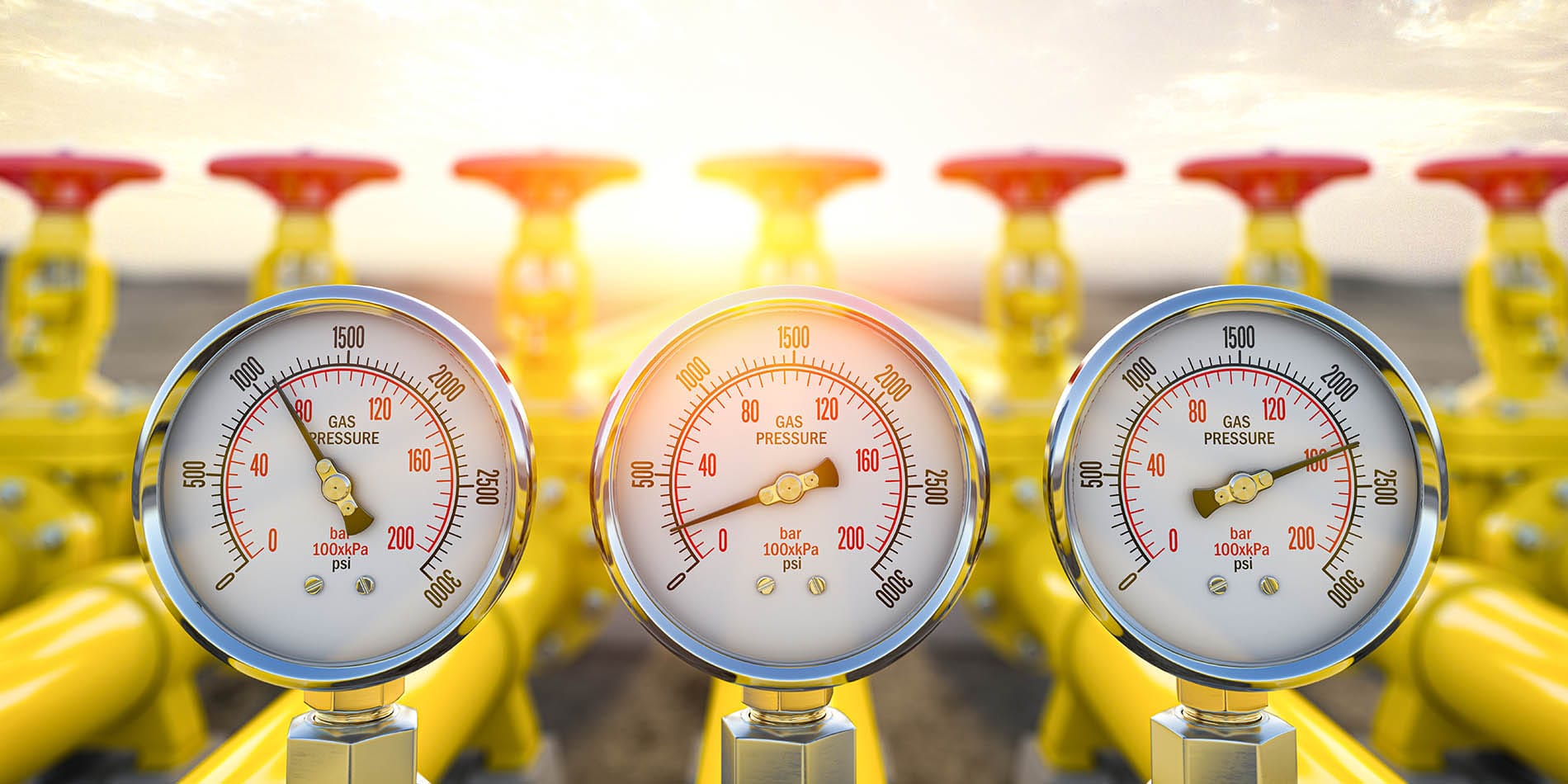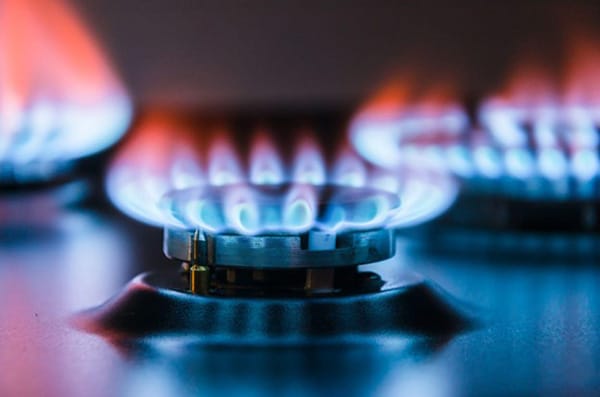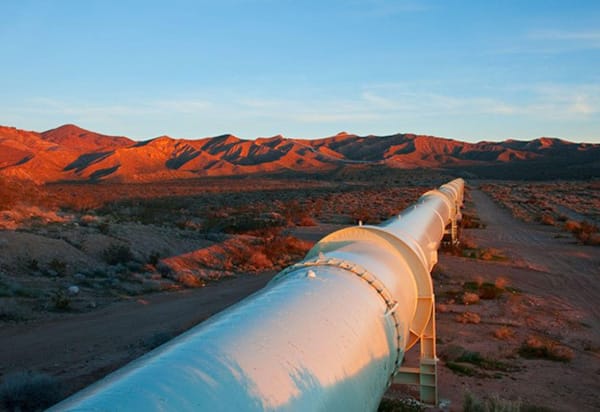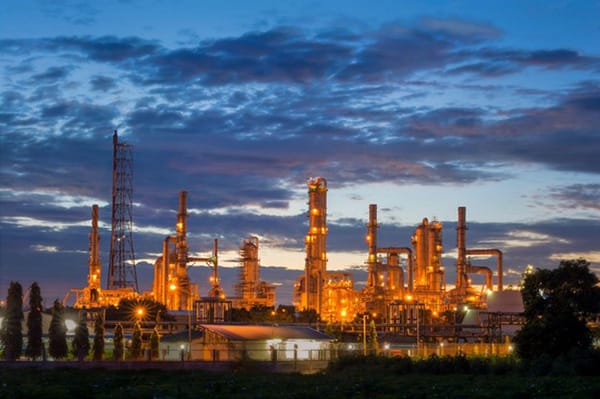Natural gas is an important source of fuel that helps power our lives. But like oil, coal, and other fossil fuels, its supply is finite and will eventually run out, a fact that distinguishes it from renewable sources of energy like wind or solar.
That said, natural gas was responsible for 22% of the energy used by the entire planet and its use is expected to grow, according to ExxonMobil. As such a significant source of power for the world, it’s worth taking a closer look at natural gas, where it comes from, what it’s used for, how much is left, and what it all means for the future.
What Is Natural Gas?
What’s commonly known as “natural gas” is really a mixture of different gases, with the main gas being the hydrocarbon methane. Like other fossil fuels, natural gas is a byproduct of decayed organic matter, such as plants and animals.
Millions of years ago, these organisms died and were buried under the Earth where they were subjected to a great deal of pressure and heat that gradually transformed them into a gaseous mixture. This mixture — which is sometimes also located alongside another important energy source, oil — is later pulled out of the ground and then burned as fuel.
Like oil, there are deposits of natural gas that are easy to mine and utilize, and there are others that require stupendous feats of engineering to become economically useful.
What Are the 5 Main Components of Natural Gas?
Though natural gas is mostly methane, it can also contain smaller amounts of ethane, propane, butane, and pentane.
1. Methane
Methane (CH4) is a molecule that is made from a single carbon atom connected to four hydrogen atoms, and the pure natural gas that is used to power a home is almost entirely methane.
Since methane is colorless, odorless, and tasteless, it’s hard to tell if you’re experiencing a gas leak. For this reason, a product called mercaptan is added to methane before it makes its way to your home or business. Mercaptan is an odorant that smells like rotten eggs, so you’ll know pretty quickly if there’s a flaw in a pipe somewhere that’s allowing methane to escape into the air.
2. Ethane
Ethane is a molecule known as an alkane, and it’s made up of just two carbon atoms. Like methane, ethane is also odorless and colorless.
3. Propane
Compared to the simplicity of ethane, propane’s three carbon atoms and eight hydrogen atoms must seem downright crowded. But one thing it does have in common with both methane and ethane is that it is also odorless and colorless (and it’s also mixed with mercaptan).
Propane is a common byproduct of the process by which natural gas is produced, and it’s used for heating, refrigeration, powering farm equipment, and the all-important grilling that happens over sunny holiday weekends.
4. Butane
Butane makes up a small fraction of natural gas, and its chemical formula is C4H10. Though butane is often described as being odorless like the other natural gas components, it’s actually known to smell vaguely like petroleum. It is extremely flammable, which is likely why it’s so commonly used as a fuel source in cigarette lighters and portable stoves.
5. Pentane
Finally, there’s pentane, a linear hydrocarbon shaped like butane (only with one extra carbon atom). Because it evaporates so easily, pentane is sometimes used as a solvent in laboratories.
How Is Natural Gas Extracted?
The natural gas industry is responsible for natural gas production. Though it’s large and complex, it can be broken down into a few steps that are relatively easy to understand.
How Is Natural Gas Extracted?
Once a natural gas reserve has been discovered, there are three principal means by which it can be pulled out of the ground.
The first, simplest, and oldest technique is known as vertical drilling. As its name suggests, vertical drilling involves drilling directly into the porous rock of a natural gas well containing the gaseous deposits. Up until the 1980s, this was the only way of harvesting natural gas, and in some circumstances, it’s still used today.
Some natural gas reservoirs can’t be reached through vertical drilling, and that’s where horizontal drilling comes in. With this approach, a vertical well is first drilled with a flexible pipe, and the pipe is then bent horizontally. The drill bit used in horizontal drilling is steerable and can be pointed towards the rock formations containing the natural gas.
Finally, and most recently, there is hydraulic fracturing, known colloquially as “fracking.” Fracking is used when natural gas is trapped within rock, such as shale, that isn’t porous enough for standard techniques. (This is why these natural gas deposits are sometimes called “shale gas” or “tight gas”.) This rock has to first be loosened up by pumping high-pressure fluids into the well, after which point the natural gas can be extracted.
Enter your ZIP Code and compare electricity rates
How Is Natural Gas Processed?
After the natural gas well has been established, the drilling equipment is removed, and a wellhead is put in its place. This wellhead connects the well to the system of gas pipelines that transport the gas to the processing plants where it’s refined.
One of the big jobs performed at these facilities is purification. When natural gas is extracted, it often contains natural gas liquids (NGLs) like butane, pentane, or ethane, and a variety of impurities, such as water and sulfur dioxide.
How Is Natural Gas Delivered?
At this point, the natural gas is ready to be delivered to end customers who use natural gas for heating, cooking, and many other things. The easiest way to transport natural gas is to first cool it to -260 degrees Fahrenheit (-162.2 degrees Celsius), which shrinks its volume by a factor of 600. In this state, natural gas is known as liquefied natural gas (LNG).
Of course, not every cubic foot of natural gas is immediately put to use. Anything that is not currently needed is put in storage facilities for later.
What’s the Difference Between Gas and Natural Gas?
Gasoline and natural gas are different and should not be confused with each other. Natural gas is a naturally occurring mixture of methane, ethane, propane, butane, and pentane, which can be extracted from reservoirs in the Earth and used for a variety of purposes.
On the other hand, the gasoline (“gas”) that you use to run your car or lawnmower is produced when crude oil is broken down into smaller parts through a process known as fractional distillation.
Do Homes Run on Natural Gas?
Whether we’re talking about appliances like refrigerators and space heaters or just general electricity generation, many of the energy requirements of a modern home can be met with natural gas. But most homes do not run on natural gas alone. It’s usually a mix of electricity and natural gas from the local energy company. Natural gas is usually something you need for heating or cooking on a gas stove, if for nothing else.
Where Does the US Get Its Natural Gas?
Figures from the U.S. Energy Information Administration indicate that in 2021, the United States consumed more than 30 trillion cubic feet of natural gas, which is more than 31 quadrillion British thermal units (BTUs). All told, this was just slightly less than a third of all the energy consumed in the U.S.
That means that natural gas is a major part of our power plants and other energy infrastructure, but where does it all come from?
Most natural gas that we use in the U.S. is produced domestically. There are many different sources of natural gas, including coal beds, offshore drilling wells, and shale. It’s even possible to harvest some natural gas from landfills, in the form of biogas.
Why Is Natural Gas a Problem?
According to the U.S. Energy Information Administration (EIA), natural gas is the cleanest fossil fuel. Nevertheless, burning natural gas produces carbon dioxide emissions. This greenhouse gas contributes to climate change.
In addition, nitrogen oxides can be released as air pollution when natural gas is burned. Nitrogen oxides — an umbrella term that refers to a family of related compounds — can have numerous deleterious effects. Nitrogen dioxide in particular is known to cause issues with lung health, such as asthma and inflammation.
How Many Years of Natural Gas Do We Have Left?
Given the importance of our natural gas reserves, you might be wondering what the gas supply in North America looks like.
Due to advances in prospecting, extraction, and processing, the gas resources we can access have increased almost every year since 2000. Given our current reserves and our present rates of usage, we had roughly 86 years worth of natural gas left in 2021.
What Are 3 Major Uses of Natural Gas?
Natural gas is a source of relatively clean energy (at least by the standards of fossil fuels), but what is natural gas actually used for?
The biggest use by far is electric power. Natural gas can be burned to make electricity, which is then sold for use residentially or in business.
Another major consumer of natural gas is the industrial sector where it can be used to heat facilities and as a feedstock in processes that make chemicals, fertilizers, or plastics.
A final popular use of natural gas is as fuel for vehicles in government or private fleets. Around 4% of the natural gas consumed in the U.S. went to the transportation sector in 2021.
Gassing Up for the Future
Natural gas is a crucial resource that’s drilled from the Earth, transported through a vast network of pipes to facilities where it’s processed or stored, and sent to the sites where it’s needed.
While it’s a crucial part of everything from electricity generation to manufacturing plastics to keeping our homes warm, it’s worth noting that there are only about 84 years of natural gas reserves left in the United States. Moreover, natural gas is mostly methane, which is a potent greenhouse gas that contributes to climate change.
With that in mind, the push for more renewable energy sources like wind power, solar power, and geothermal energy will continue to grow. To learn more about energy resources and tips for improving energy efficiency in your household, be sure to browse the Energy Savings blog.
Brought to you by energysavings.com
All images licensed from Adobe Stock.
Featured image:





